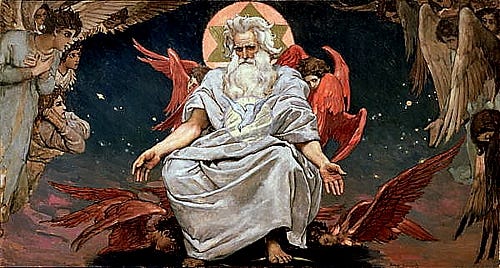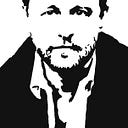
WHY HUMANS CREATE AND WHY GOD MAY NOT BE ALL POWERFUL
When Rabbi Bradley Shavit Artson discovered his son, Jacob, was born with autism it turned his world upside down and also upended his traditional relationship with God and the Torah. He no longer easily believed in the all-powerful and benevolent God that he once had. How could an all good, all powerful God allow his innocent child to be born with such a life-altering condition?
Rabbi Artson determined he and God would part ways — or at least they wouldn’t be on speaking terms for a while — a difficult decision since he was one of the men, professionally, responsible for leading his local religious community.
In the process of researching ways to reconcile science and religion, almost by accident, Artson discovered a vein of religious thinking called, Process Thought.
Process Thought was first articulated by philosophers Alfred Whitehead and Charles Hartshorne. Process Thought finds its roots in the language of the Biblical creation story found in Genesis. That story implies that God began his creation amidst the existence of “chaos.” It describe chaos as something God “hovered above.” Implying it had form and substance — or at the very least, that it was a real thing and not a metaphor for nothingness.
Process Thought describes God’s act of creating not as an all-powerful act of coercion but as transformative. He worked to mold chaos into something worthwhile, to redeem it. And then later, he invited us into that process. So the picture we get isn’t of a God with unlimited power who snaps his finger and creates reality from nothing — but a God who plunges his hands into the dark, unwieldy stuff of void and reshapes it into something meaningful.
I’m not Jewish and not an adherent of Process Thought — not in any conventional sense. But, this picture of God and my role as a co-creator with him resonates deeply with me.
God started the ball rolling by molding pre-existing chaos into light, life, and goodness — and then he steps back and invites me, invites us to continue the work. We do that by making sense of tragedy, by striving to be better versions of ourselves, and by creating art.
As any artists know, the best art is often created from the chaos of life. The chaos or an unexpected diagnosis, the chaos of a broken relationship, and as we are all too familiar with these days — the chaos of a worldwide pandemic. I believe each of us, whether we believe in Process Thought or not, whether we identify as an artist or not, have an opportunity to create something meaningful out of this chaos. Maybe it’s imagining new ways to navigate our upside down economic realities, maybe it’s creating new habits from the confusion of our day to day lives, or maybe it’s doing deep, deep internal work to sort out our inner lives.
Obviously great art will come out of this national emergency, as well. Probably some terrible art too — heavy-handed poems, boring memoirs, and cliche songs — but also some deeply introspective work that will call us to reexamine ourselves and our world.
Shakespeare said art was a mirror that we hold up to the world. I don’t know that I agree with that definition. It reduces art to reporting. There’s an apocryphal story of somebody scrawling the quote, “Art is a hammer” on a whiteboard at MIT. I don’t buy that definition either because it implies Art destroys what came before. I think art may be better described as the mythical philosopher’s stone — it takes the mundane base material of our lives and transforms it into gold, into something worthwhile and beautiful.
That is the work of God and that is the work of artists.
